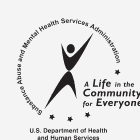
The Player, Not the Video Game is to Blame, Study Finds
|
Parents who are worried about their kids playing violent video games might want to shift their concern. Recent research focuses on the player and not the game itself. If your kid has certain dispositions — say they are moody, impulsive or unfriendly — then you might want to limit their violent video game playtime. Otherwise, placing all the blame on the violence may be unfair, according to USA Today. This study, which aims to cut through the confusion surrounding the topic, comes from psychologist Patrick Markey who co-wrote it and had it published in the journal Review of General Psychology.








